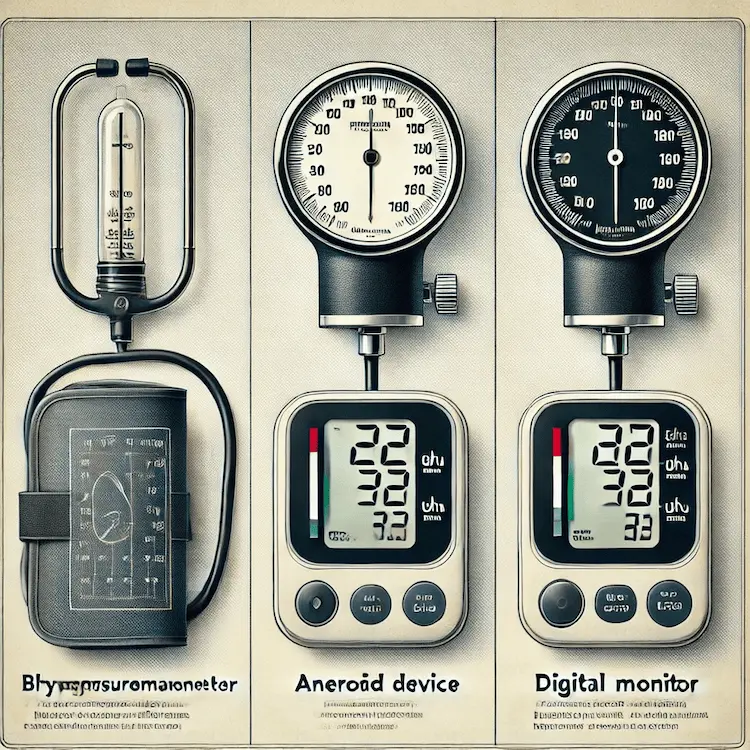Blood pressure and coronary artery disease (CAD) are closely linked, with hypertension being a major risk factor for heart-related complications. The term Sphyg refers to sphygmomanometers, the medical devices used to measure blood pressure. Monitoring and managing blood pressure is essential in preventing and controlling CAD, a leading cause of mortality worldwide. This article explores the connection between blood pressure and CAD, discusses tools used for monitoring, compares different methods, and provides actionable insights for better heart health.
Understanding Blood Pressure and Coronary Artery Disease
What Is Blood Pressure?
Blood pressure is the force exerted by circulating blood against arterial walls. It is measured in millimeters of mercury (mmHg) and recorded as:
- Systolic Pressure (Top Number): Pressure when the heart pumps blood.
- Diastolic Pressure (Bottom Number): Pressure when the heart rests between beats.
A normal blood pressure reading is typically 120/80 mmHg, while readings above 130/80 mmHg indicate hypertension.
What Is Coronary Artery Disease (CAD)?
CAD occurs when plaque (fatty deposits) builds up in the coronary arteries, reducing blood flow to the heart. This condition can lead to:
- Angina (Chest Pain)
- Heart Attacks (Myocardial Infarction)
- Heart Failure
The Connection Between Blood Pressure and CAD
Hypertension damages arterial walls, making them narrower and less flexible. This increases the likelihood of plaque buildup and atherosclerosis, which directly contributes to CAD. High blood pressure also forces the heart to work harder, straining the heart muscles and increasing the risk of heart failure.

Statistics and Health Impacts
- Nearly 50% of adults in the U.S. have high blood pressure, yet only 1 in 4 have it under control.
- Hypertension contributes to 7.5 million deaths globally each year, accounting for 13% of all deaths.
- CAD is the leading cause of death worldwide, responsible for 17.9 million deaths annually.
- Patients with uncontrolled hypertension are 2–4 times more likely to develop CAD.
Managing blood pressure effectively can reduce the risk of CAD by 25–40%.
Methods for Monitoring Blood Pressure
Manual Blood Pressure Monitors (Mercury & Aneroid Sphygmomanometers)
- Mercury Sphygmomanometers: Considered the gold standard for accuracy. However, they are being phased out due to environmental concerns.
- Aneroid Sphygmomanometers: Portable and widely used but require proper calibration for accuracy.
Digital Blood Pressure Monitors (Oscillometric Devices)
- Automatic and Semi-Automatic Models: Easier to use, with built-in digital displays.
- Wrist vs. Arm Monitors: Arm monitors are more accurate, while wrist monitors are more convenient for self-monitoring.
Ambulatory Blood Pressure Monitoring (ABPM)
- Worn for 24 hours, capturing fluctuations throughout the day.
- Provides a more comprehensive assessment than single readings.
Home Blood Pressure Monitoring (HBPM)
- Encourages consistent tracking and helps detect white coat hypertension (high BP in medical settings but normal at home).
Comparison Table: Accuracy and Usability of Different Blood Pressure Monitoring Methods
| Method |
Accuracy |
Ease of Use |
Best for |
| Mercury Sphygmomanometer |
★★★★★ |
Requires training |
Medical professionals |
| Aneroid Sphygmomanometer |
★★★★☆ |
Requires training |
Clinicians & professionals |
| Digital BP Monitors |
★★★★☆ |
Easy to use |
Home users & patients |
| Ambulatory BP Monitoring |
★★★★★ |
Requires setup |
In-depth monitoring |
| Wrist BP Monitors |
★★★☆☆ |
Very easy |
Convenience-focused users |

Managing Blood Pressure to Reduce CAD Risk
Lifestyle Changes
Dietary Adjustments
-
- Reduce sodium intake to under 2,300 mg per day.
- Eat a Mediterranean or DASH diet (rich in fruits, vegetables, whole grains, and lean proteins).
- Exercise Regularly
- Engage in 150 minutes of moderate aerobic activity per week.
- Include resistance training to strengthen the heart.
Quit Smoking & Limit Alcohol
-
- Smoking damages arterial walls and promotes plaque buildup.
- Alcohol should be limited to 1 drink per day for women, 2 for men.
Weight Management
-
- Losing 5–10% of body weight can significantly lower blood pressure.
Stress Management
-
- Practice meditation, deep breathing, and relaxation techniques.
Medical Treatments and Interventions
Medications
-
- ACE Inhibitors (e.g., Lisinopril): Lower BP by relaxing blood vessels.
- Beta-Blockers (e.g., Metoprolol): Reduce heart rate and workload.
- Diuretics (e.g., Hydrochlorothiazide): Remove excess sodium and fluid.
Medical Procedures
-
- Angioplasty and Stenting: Opens blocked arteries using a balloon and stent.
- Coronary Artery Bypass Graft (CABG): Bypasses blocked arteries to improve blood flow.
Conclusion
Understanding the relationship between blood pressure and coronary artery disease is crucial for prevention and management. Regular monitoring, adopting a heart-healthy lifestyle, and seeking medical intervention when necessary can significantly reduce CAD risk. The use of accurate blood pressure monitoring tools like Sphyg devices plays a key role in early detection and management.
Key Takeaways
High blood pressure significantly increases the risk of CAD.
Regular BP monitoring helps detect early warning signs.
A combination of lifestyle changes, medication, and medical procedures can prevent CAD.
Sphygmomanometers and digital monitors are essential for tracking BP.
Managing stress, diet, and exercise are critical for heart health.
Actionable Recommendations
Measure blood pressure at least twice a day if at risk.
Switch to a low-sodium, high-fiber diet for better BP control.
Engage in regular physical activity to maintain healthy BP.
Consult a doctor if BP readings consistently exceed 130/80 mmHg.

